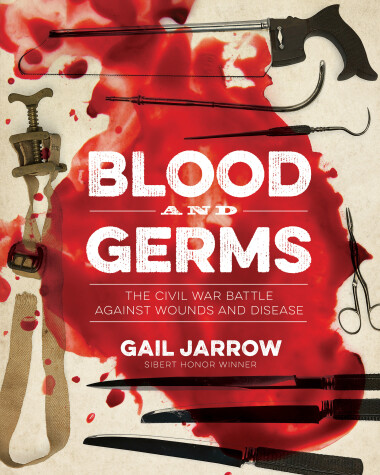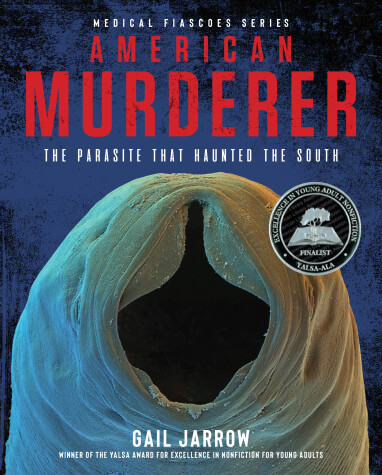Medical Fiascoes
2 total works
The science and grisly history of U.S. Civil War medicine, using actual medical cases and first-person accounts by soldiers, doctors, and nurses, is explored in this fascinating nonfiction book for young readers.
The Civil War took the lives of hundreds of thousands of Americans and left countless others with disabling wounds and chronic illnesses. Bullets and artillery shells shattered soldiers' bodies, while microbes and parasites killed twice as many men as did the battles. Yet from this tragic four-year conflict came innovations that enhanced medical care in the United States. With striking detail, this book by acclaimed writer Gail Jarrow reveals battlefield rescues, surgical techniques, medicines, and patient care, and celebrates the men and women of both the North and South who volunteered to save lives. The first title in the Medical Fiascoes series!
The Civil War took the lives of hundreds of thousands of Americans and left countless others with disabling wounds and chronic illnesses. Bullets and artillery shells shattered soldiers' bodies, while microbes and parasites killed twice as many men as did the battles. Yet from this tragic four-year conflict came innovations that enhanced medical care in the United States. With striking detail, this book by acclaimed writer Gail Jarrow reveals battlefield rescues, surgical techniques, medicines, and patient care, and celebrates the men and women of both the North and South who volunteered to save lives. The first title in the Medical Fiascoes series!
Included on NPR's 2022 "Books We Love" List
Finalist, 2023 YALSA Award for Excellence in Nonfiction
ALSC Notable Children's Book
What made workers in the American South so tired and feeble during the 19th and early 20th centuries? This exciting medical mystery uncovers the secrets of the parasite hookworm, commonly known as the “American Murderer,” and is the latest title in Gail Jarrow’s (YALSA Excellence in Nonfiction for Young Adults award-winning author) Medical Fiascoes series.
Imagine microscopic worms living in the soil. They enter your body through your bare feet, travel to your intestines, and stay there for years sucking your blood like vampires. You feel exhausted. You get sick easily. It sounds like a nightmare, but that’s what happened in the American South during the 1800s and early 1900s.
Doctors never guessed that hookworms were making patients ill, but zoologist Charles Stiles knew better. Working with one of the first public health organizations, he and his colleagues treated the sick and showed Southerners how to protect themselves by wearing shoes and using outhouses so that the worms didn’t spread. Although hookworm was eventually controlled in the US, the parasite remains a serious health problem throughout the world. The topic of this STEM book remains relevant and will fascinate readers interested in medicine, science, history—and gross stories about bloodsucking creatures.
Finalist, 2023 YALSA Award for Excellence in Nonfiction
ALSC Notable Children's Book
What made workers in the American South so tired and feeble during the 19th and early 20th centuries? This exciting medical mystery uncovers the secrets of the parasite hookworm, commonly known as the “American Murderer,” and is the latest title in Gail Jarrow’s (YALSA Excellence in Nonfiction for Young Adults award-winning author) Medical Fiascoes series.
Imagine microscopic worms living in the soil. They enter your body through your bare feet, travel to your intestines, and stay there for years sucking your blood like vampires. You feel exhausted. You get sick easily. It sounds like a nightmare, but that’s what happened in the American South during the 1800s and early 1900s.
Doctors never guessed that hookworms were making patients ill, but zoologist Charles Stiles knew better. Working with one of the first public health organizations, he and his colleagues treated the sick and showed Southerners how to protect themselves by wearing shoes and using outhouses so that the worms didn’t spread. Although hookworm was eventually controlled in the US, the parasite remains a serious health problem throughout the world. The topic of this STEM book remains relevant and will fascinate readers interested in medicine, science, history—and gross stories about bloodsucking creatures.

